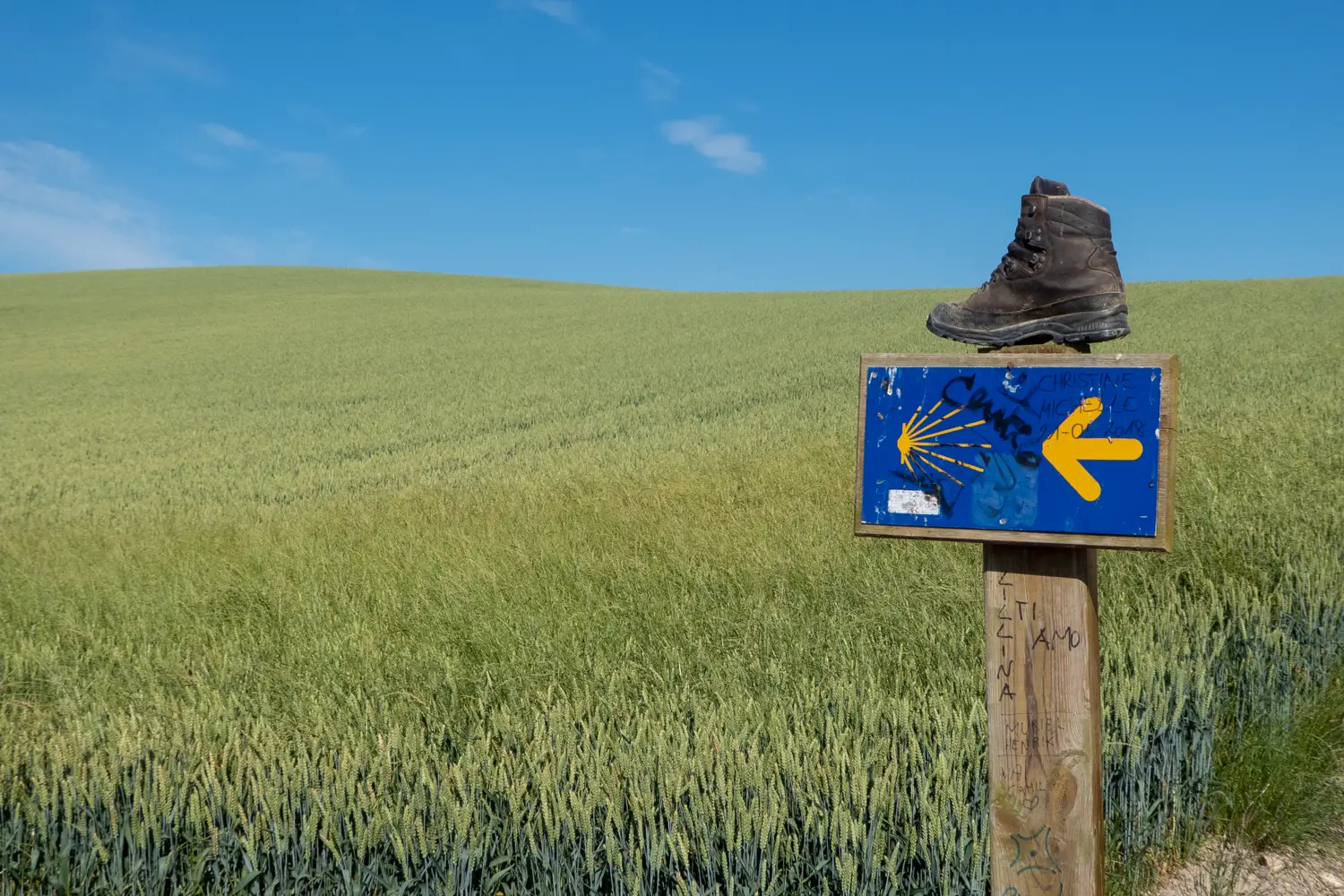What you might not know until you start your research is that the Camino de Santiago is not one singular trail. There are actually a range of routes which make up the Camino de Santiago, all differing in length, difficultly and start point.
While the Camino Frances is the most well-known trail, there are eight main Camino de Santiago routes to choose from. Differentiating between these routes can be confusing so I’ll tell you exactly what you need to know to pick the best trail for you below. ¡Buen Camino!
Read more: (opens in new tab)
- Female Packing List for the Camino de Santiago
- What Does the Camino Scallop Shell Symbol Mean?
- Top Things to Do in Santiago de Compostela, Spain
A Guide to the Camino de Santiago Routes
TL;DR – Choosing a Camino de Santiago Route
- Shortest Camino de Santiago Route – Camino Ingles or Camino Finisterre
- Most Popular Camino de Santiago Route – Camino Frances
- Longest Camino de Santiago Route – Via de la Plata
- Flattest Camino de Santiago Route – Camino Portugues Coastal
- Best Camino de Santiago Route for Beginners – Camino Ingles
- Hardest Camino de Santiago Route – Via de la Plata
- Easiest Camino de Santiago Route – Camino Finisterre
- Most Adventurous Camino de Santiago Route – Camino del Norte
- Best Camino de Santiago Route for Winter – Camino Ingles
8 Camino De Santiago Routes
The Camino routes listed below are the main routes, however, there are additional routes not analysed below. The Camino Espiritual, the Aragonese Way and the Northern Inland Way are all less touristed Camino de Santiago routes that you can take to reach Santiago de Compostela.
1. Camino Frances (The French Way)
- Length: 764 km
- Duration: approx. 35 days
- Difficulty: Moderate
The Camino Frances is the most popular of all the Camino de Santiago routes. The start point is in the French town of Saint Jean Pied de Port and it takes most people somewhere between 25 and 40 days to walk the entire trail.
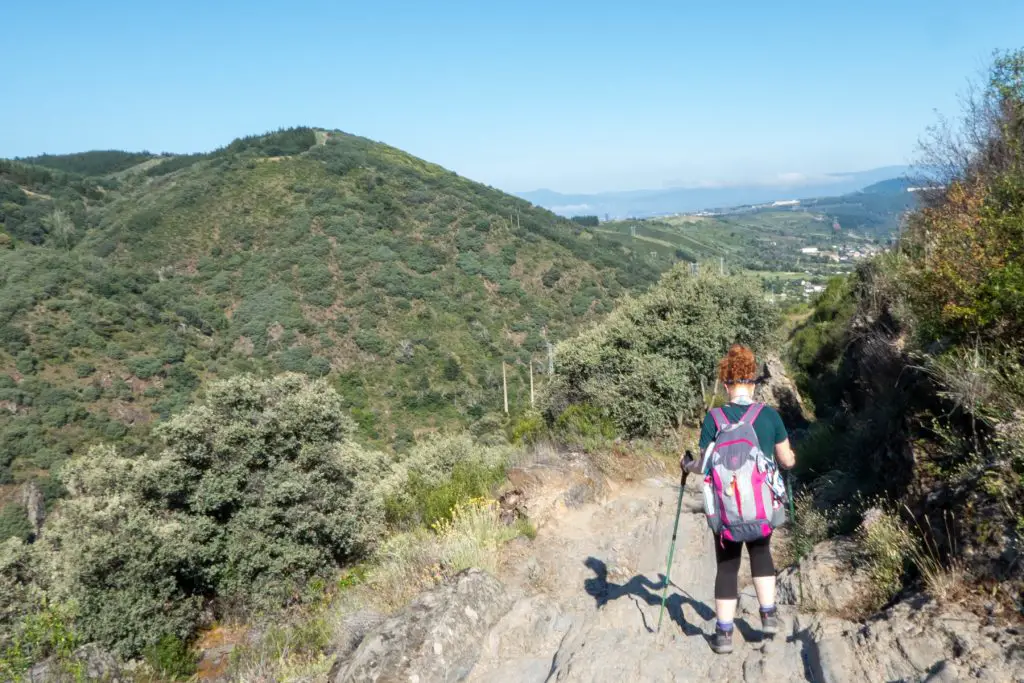
Owing to the popularity of the French Way, it sees over half of all the pilgrims who walk the Camino annually. In fact, in 2021, nearly 100,000 made the journey to Santiago de Compostela via this route.
As so many people transit the French Way, it has the most facilities, with a range of municipal albergues, private albergues, hotels and various food and drink options. It also passes through many towns, making it well-connected and easy to start from a variety of cities en route.
While undoubtedly a challenging route, it is a great option for experienced hikers who are looking to walk their first Camino. The number of people on the trail means that there is a real sense of camaraderie.
There are a range of beautiful cities that you pass through on the French Way, including Burgos, León, Astorga, Pamplona, Ponferrada and, of course, Santiago de Compostela. July and August are the busiest months to walk the Camino Frances.
If you reach Santiago and still have life in your legs, you can easily combine the French Way with the Camino Finisterre.
2. Camino Portugues (The Portuguese Way)
- Length: 620 km
- Duration: approx. 25 days
- Difficulty: Moderate
The Portuguese Camino traditionally begins in Lisbon and is the second most popular Camino walked every year. It takes just shy of a month to complete (depending on your walking speed) and showcases a range of interesting scenery and historical towns.
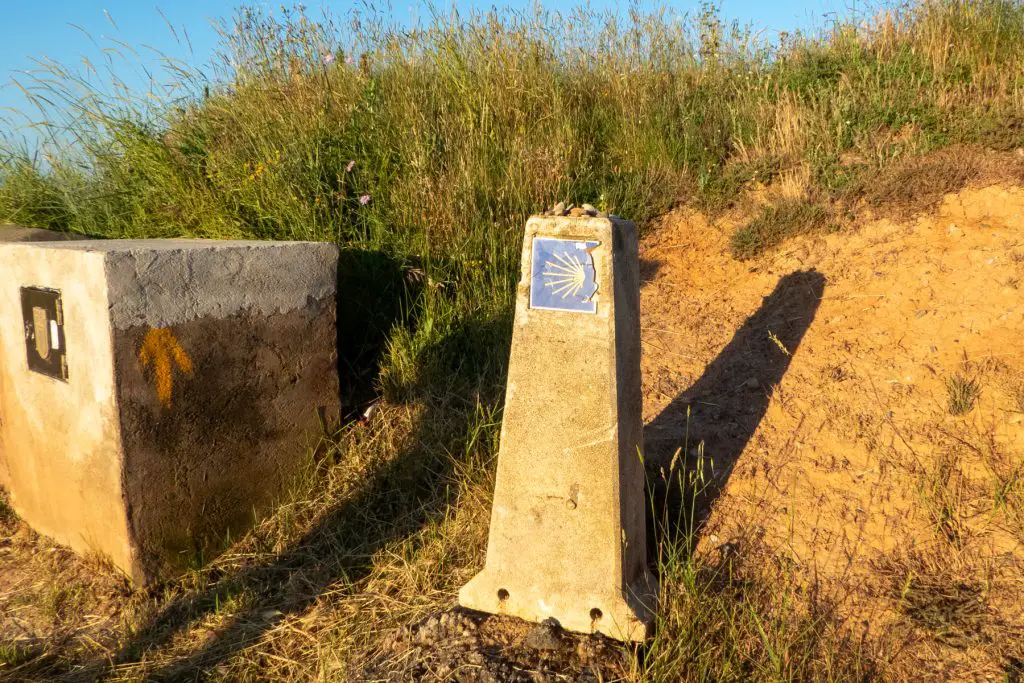
While there are plenty of amenities on this route, the section between Lisbon and Porto is slightly more lacking. This means that pilgrims may have to walk longer days to reach accommodation options which can be a problem for those hiking out of season as many of the albergues close.
It is easy to pick up the Camino Finisterre from the finish point of Santiago or walk another of the Camino routes backwards. However, be aware that walking against the flow of pilgrims will leave you very much in the minority!
While a popular route to take during the summer, pilgrims tackling the Portuguese Way should be aware that the temperatures can be extreme, particularly along the section between Lisbon and Porto.
3. Camino Portugues Coastal (The Portuguese Coastal Way)
- Length: 266 km
- Duration: approx.13 days
- Difficulty: Easy
Starting in the city of Porto, the Portuguese Coastal Way is a new variation on the more established Camino Portugues. It follows the shoreline of the Atlantic Coast, offering spectacular seaside views.
The Portuguese Coastal Way takes in three UNESCO World Heritage sites, as well as winding through cute villages. The full journey usually takes around two weeks, making it a good choice for pilgrims with a more limited time frame in which to complete a Camino.
This is one of the flattest Camino routes which makes it a good option for pilgrims with weak knees. The route is growing in popularity every year and it is generally a peaceful trail to follow, ideal for pilgrims seeking solitude and the fresh sea air.
While the Portuguese Camino can be stifling in the summer months, the coastal route offers a pleasant sea breeze.
4. Camino Ingles (The English Way/The Celtic Camino)
- Length: 119 km
- Duration: 6 days
- Difficulty: Easy
As one of the shortest Camino routes, this trail is good for beginners who don’t know whether they want to commit to one of the longer pilgrimages. It is pretty easy, with mostly asphalt walking required. Bear in mind that repeated hiking day after day can still be challenging, particularly for those who don’t have much previous experience with long-distance trekking.
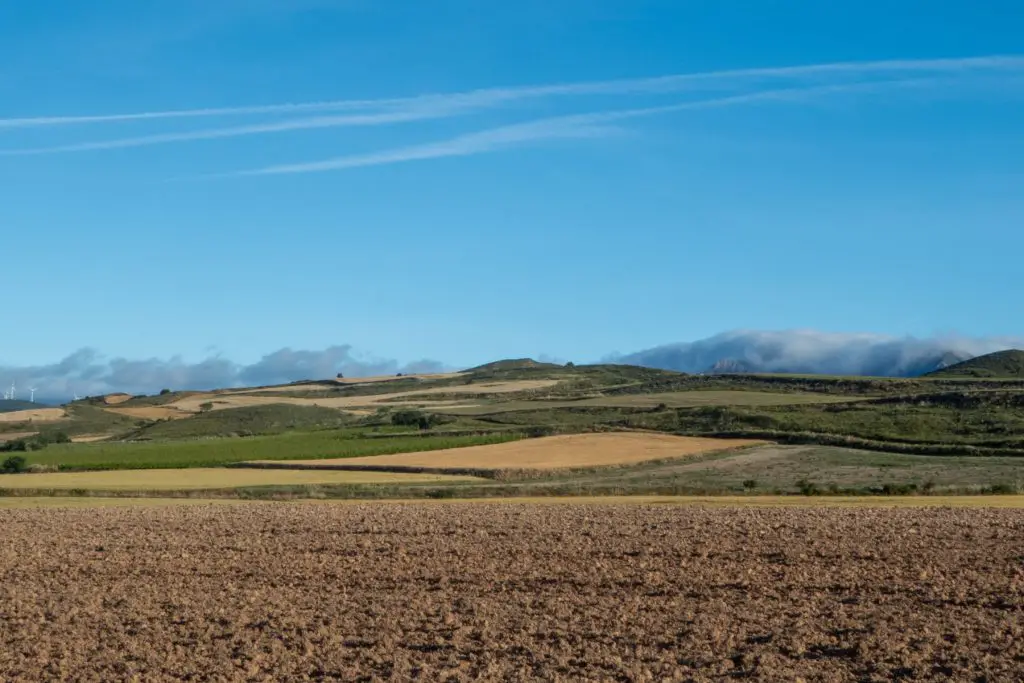
Historically, the English Camino, also referred to as the Celtic Camino, would have been the main route for English, Scottish and Irish pilgrims heading to Santiago de Compostela. Their pilgrimages would traditionally have started in their home countries on foot before they tackled the boat crossing to pick up the trail at the other end.
The English Camino has two start points, A Coruña and Ferrol. While A Coruña is arguably the more beautiful city of the two, most people opt to start from Ferrol. Pilgrims need to walk a minimum of 100km to qualify for their Compostela certificate in Santiago and the hike from A Coruña is not long enough to qualify.
5. Camino Finisterre-Muxía
- Length: 119 km
- Duration: approx. 5 days
- Difficulty: Easy
The Finisterre Way is the only Camino route to begin in Santiago de Compostela and finish somewhere else. In this instance, hikers can finish at either Muxía or Cape Finisterre, with the latter nicknamed the ‘End of the World’. This means that it is regularly tacked onto the end of longer routes like the Frances and the Portugues.
It is one of the easiest Camino routes to take, not only because it is short but also because there are relatively few steep ascents and descents. While there are two official endpoints of this trail, it is possible to walk to both of them in a loop.
The coastal scenery between the two finish points is nothing short of epic and the striking landscapes are arguably the highlight of the entire trek. This trail is best hiked between the months of June to September as this is when the weather is best. As there are no prolonged mountain sections, it is a good Camino to walk in winter but you’ll need to make sure you bring a rain jacket and a windproof!
6. Via de la Plata (The Silver Way)
- Length: 970 km
- Duration: approx. 40 days
- Difficulty: Challenging
The longest of all the main Camino de Santiago routes, the Via de la Plata follows an old roman road that once marked the way to the silver mines located in the north of the country. Owing to its distance, it is one of the less popular Camino routes and takes around 5-6 weeks to complete.
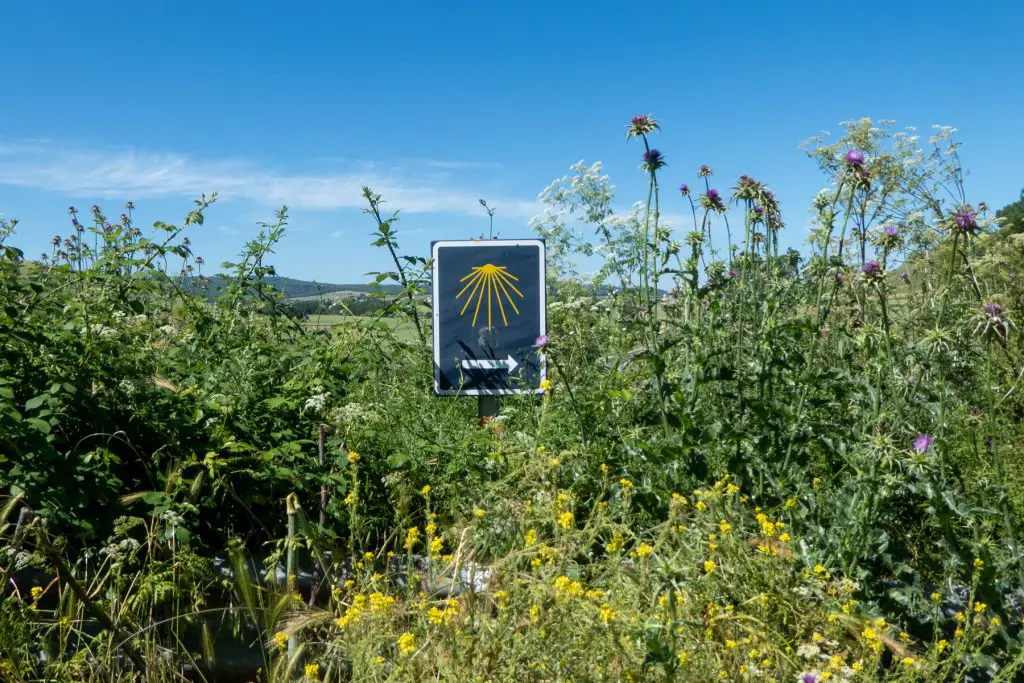
Getting the timings right with this Camino is vitally important because Southern Spain gets super hot and it can be outright dangerous to walk in the kind of temperatures readily recorded during peak summer season.
April to May is an ideal time to take on this trek as you will have passed through the hottest parts of the country before the most severe of the heat has arrived. The stages of The Silver Way are long and facilities are fewer in number when compared to other Camino routes.
The advantage of this comparative remoteness is that you will be rewarded with some of the most beautiful Spanish scenery out there – olive tree plantations, vineyards and wildflowers are par for the course, not to mention you will walk through fewer cities.
7. Camino del Norte (The Northern Way)
- Length: 824 km
- Duration: approx. 35 days
- Difficulty: Moderate
The Camino del Norte is another coastal route and one of the oldest pilgrimage trails to Santiago de Compostela. It is a good alternative to the Camino Frances as it offers a cool coastal breeze, making the walk a less humid experience. It is also a tad more difficult with more ascents and descents.
The Northern Way comprises a mix of farmland, country roads and coastal hiking, offering a variety of picturesque settings. While still a popular route, it is far less foot-trafficked, making it a great Camino for more adventurous pilgrims.
It is easy to combine the Camino del Norte with the Camino Primitivo (below) if you veer off the trail before you get to Gijón. It takes around two days to walk to Oviedo, the starting point of the Camino Primitivo.
If you’re a foodie, the Camino del Norte is a great option for you. As the route skirts the coast for much of the journey, it is ideal for lovers of freshly caught seafood. Make the most of being able to eat anything and everything you want while you’re able to burn it off!
8. Camino Primitivo (The Primitive/Original Way)
- Length: 313 km
- Duration: approx. 14 days
- Difficulty: Challenging
As its name implies, the Camino Primitivo is the oldest route to Santiago de Compostela dating back to the 9th century. It begins at the Cathedral of El Salvador in the old Asturian capital of Oviedo and it was once walked by the Spanish King Alfonso II!
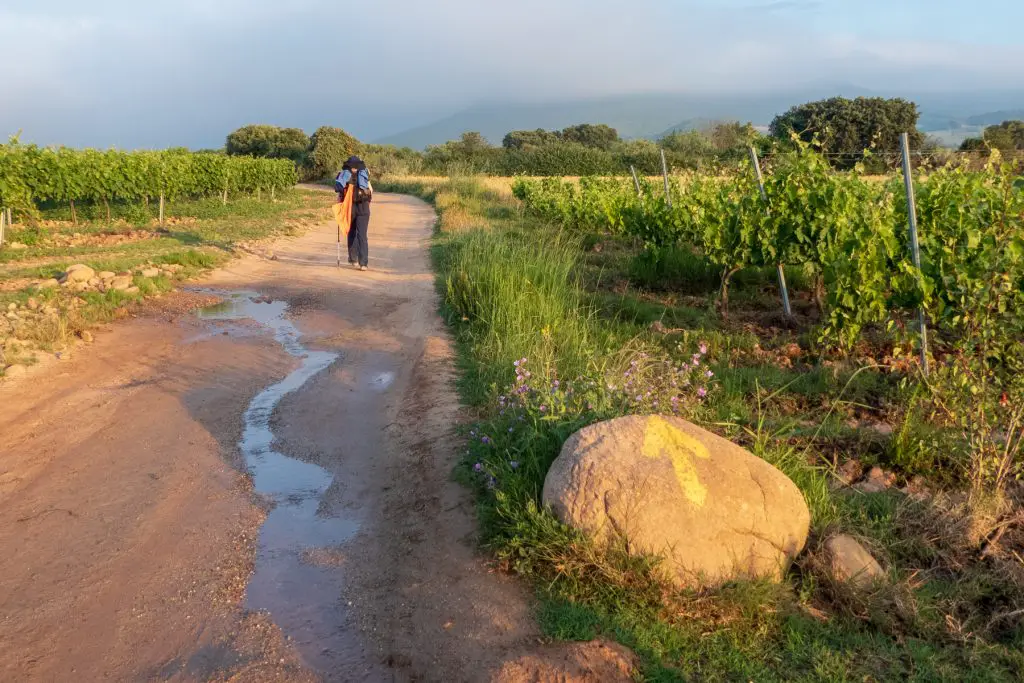
Although not as long as some of the other Camino routes, it is considered to be fairly challenging all the same, largely because of the steep ascents and descents en route. This may not be the choice for you if you struggle with knee pain!
The Camino Primitivo is less popular than many of the other Camino routes but despite this, there are still municipal albergues at the end of each stage – even those on a budget can tackle this route. If you want to spend less time in cities and more time in nature, the Camino Primitivo is a good choice.
Camino de Santiago Routes FAQ
What is the best route for beginners?
A shorter route like the Camino Ingles is a good hike for beginners. This will allow you to experience a Camino without committing to the big distances of the Frances. However, if you are an experienced hiker but newbie pilgrim, the Frances boasts lots of facilities and a great sense of camaraderie.
How long does it take to walk the Camino de Santiago?
This depends on the Camino route that you select. The Frances takes most hikers around a month from the start point of Saint Jean Pied de Port.
How far do you walk a day on the Camino?
This is purely a matter of personal preference. When I did my first Camino, I started with 7km days before building up to 40 km+ in a day. Most official Camino stages span between 20-25km.
What is the best month to walk the Camino de Santiago?
The best months to walk the Camino vary slightly depending on which route you choose. In general, the summer months are the best time to hike the Camino de Santiago but these months also mark the busiest time. The shoulder seasons (spring and autumn) are better for those seeking sunny days with fewer crowds.
Do I need a guidebook for the Camino?
The Camino is incredibly well marked so most people won’t need a guidebook, especially if they are travelling with a smartphone. Personally, I enjoy travelling with a guidebook so I have an offline map. I’d recommend the books by the late John Brierley, he has covered most Camino routes and breaks each trail down into easy-to-follow stages, complete with accommodation recommendations.
Can I do the Camino on my own?
Yes! Plenty of people do the Camino alone every year and it is generally considered a safe activity. Always walk within your limits, be careful when selecting a trail in the winter and remember to carry an offline map.
The main Camino de Santiago routes listed above offer a range of varied experiences for hikers. From the pilgrim-filled trails of the French Way to the off-the-beaten-track paths of the Camino del Norte, there is something for all stripes of hiker here.
Go forth brave pilgrim, you’re going to have an adventure of a lifetime! Buen Camino.

